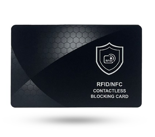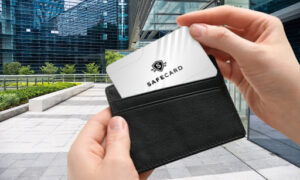Welcome to the future of payments! Gone are the days of fumbling for cash or swiping cards – contactless payment has arrived, and it’s here to stay. As technology evolves at lightning speed, so does our ability to handle transactions effortlessly and securely. In this exciting blog post, we will dive deep into how contactless payment is revolutionizing the way we exchange money, making our lives more convenient than ever before. So buckle up and get ready for a thrilling exploration of this game-changing phenomenon that is reshaping the very foundations of commerce as we know it.
Introduction to Contactless Payment Technology
Contactless payments are revolutionizing the way we handle transactions by allowing us to pay for goods and services without ever having to physically touch a credit card or cash. This new technology is based on near field communication (NFC), which enables two devices to communicate with each other when they are placed within close proximity of each other. NFC-enabled devices can be used to make payments by simply holding the device near a contactless payment terminal.
There are many benefits of using contactless payment technology. Perhaps the most obvious benefit is the increased speed and convenience of transactions. With traditional methods of payment, such as cash or credit cards, customers often have to fumble around in their wallets or purses to find the right card, and then swipe or insert it into a payment terminal. Contactless payments eliminate this hassle by allowing customers to simply hold their device up to a terminal and have the transaction completed in seconds.
Another benefit of contactless payments is improved security. When you use a credit card or cash to make a purchase, you are typically required to provide your name, address, and other personal information. This information can be intercepted and used for identity theft or fraud. With contactless payments, your personal information is never shared with the merchant because the transaction is completed through an encrypted signal between your device and the payment terminal. This makes it much more difficult for thieves to obtain your personal information and commit fraud.
Contactless payments can help you manage your finances better because you can easily keep track of all your purchases in real-time. Furthermore, the added convenience of contactless payments can mean that you are more likely to make purchases when you need them, helping you to control and manage your spending.
Overall, contactless payment technology can make your life easier and more secure. It’s no wonder that this new technology is becoming so popular.
Benefits of Contactless Payments
There are many benefits of contactless payments. Perhaps the most obvious benefit is that it is more convenient than traditional methods of payment. With contactless payments, you don’t have to fumble around with cash or search for your credit card when you’re ready to make a purchase. Just tap your card on the reader and you’re done!
Another great benefit of contactless payments is that it can help you avoid credit card fraud. When you use a contactless payment method, your credit card information is not stored on the merchant’s system. This means that if a hacker were to gain access to the system, they would not be able to steal your credit card information.
Contactless payments also tend to be more secure than traditional methods of payment. When you use a contactless payment method, your transaction is encrypted, meaning that it is very difficult for someone to intercept and steal your information. Additionally, most contactless payment systems require you to enter a PIN or provide some other form of identification before making a purchase, which helps to prevent unauthorized transactions.
How Does a Contactless Payment System Work?
A contactless payment is simply a way to pay for something using your credit or debit card without having to physically swipe or insert your card into a card reader. Instead, you just hold your card near an NFC (near-field communication) terminal, which reads the information on the card and processes the payment. When you’re paying with Apple Pay or Google Pay, you’re also using NFC technology.
There are several benefits of using a contactless payment system. First, it’s more convenient than traditional methods since you don’t have to fumble around with your card and enter your PIN number. Secondly, it’s more secure because your card never leaves your hand and therefore can’t be skimmed by criminals. It’s faster since you don’t have to wait for the terminal to process your swipe or chip.
If you’re interested in using a contactless payment system, there are a few things you need to know. First, not all terminals are set up to accept contactless payments, so be sure to look for the NFC symbol before trying to pay. Secondly, you’ll need to have either a credit or debit card that is enabled for contactless payments – most major banks now offer this option. And finally, keep in mind that there are usually limits on how much you can spend per transaction when using a contactless payment system, so it might not be ideal for large purchases.
Security and Privacy Considerations
Contactless payments are made possible by Near Field Communication (NFC) technology, which allows two devices to communicate with each other when they are brought within close proximity of each other. NFC-enabled devices can be used to make payments by simply holding the device up to a payment terminal.
There are several security and privacy considerations to keep in mind when using contactless payments. First, it is important to make sure that your device is locked when not in use. This will help to prevent unauthorized access to your device and the personal information stored on it. Second, be aware of your surroundings when using contactless payments. Do not use your device in an area where someone could potentially intercept or eavesdrop on the signal. Remember that contactless payments are like any other type of payment and you should take precautions to protect your financial information.
Case Studies of Successful Implementation of the Technology
In the past few years, there has been a growing trend of businesses implementing contactless payment systems. This technology allows customers to pay for goods and services by simply waving their credit or debit card near a reader, instead of having to insert or swipe their card. Contactless payment is not only more convenient for customers, but it also helps businesses run more smoothly and efficiently.
There are many case studies of businesses that have successfully implemented contactless payment systems. One such example is The Container Store, which installed contactless terminals in all of its stores in early 2014. Since then, the retailer has seen significant increases in sales and customer satisfaction. Another company that has had success with contactless payment is Starbucks. The coffee chain began rolling out contactless terminals in its US stores in 2015, and saw a 26% increase in mobile payment transactions within one year.
Businesses that have implemented contactless payment have seen positive results. Customers appreciate the convenience and efficiency of the system, while businesses benefit from increased sales and enhanced operations. As the technology continues to evolve, it is likely that even more businesses will begin using contactless payment systems in the coming years.
Obstacles Faced During Adoption
When it comes to adoption, there are a number of obstacles that can stand in the way of a successful adoption. One of the biggest obstacles is the cost of adoption. Adoption can be a very expensive process, and many families are simply not able to afford it. Another obstacle is the paperwork and red tape involved in adoption. The process can be very complicated and time-consuming, which can discourage many families from even starting the process.
There are also a number of legal hurdles that must be cleared in order for an adoption to take place. This can include everything from background checks to the approval of both adoptive parents by the state. In some cases, birthparents may also need to give their consent before an adoption can take place. All of these factors can make the adoption process seem overwhelming and daunting for many families.
Fortunately, there are a number of organizations and resources available to help families navigate the adoption process. These organizations can provide financial assistance, help with paperwork and red tape, and offer general support and guidance throughout the entire process. With the right help, adopting a child can be an exciting and rewarding experience for both the child and the adoptive family.
Alternatives to Contactless Payments
There are many alternatives to contactless payments, but the most popular ones are still based on the concept of using a card or phone to tap and pay. The two most common types of contactless payments are Near Field Communication (NFC) payments and Radio Frequency Identification (RFID) payments.
NFC payments are made by waving or tapping your NFC-enabled credit card or smartphone across an NFC reader at the checkout. The process is similar to using a contactless credit card, but you don’t have to enter your PIN. Instead, you can use your fingerprint, iris scan, or facial recognition to verify the payment.
RFID payments work in a similar way to NFC payments, but they use radio waves instead of electromagnetic waves. You can make an RFID payment by holding your RFID-enabled credit card or smartphone close to an RFID reader. Some newer cars also have built-in RFID readers that allow you to make hands-free payments for gas and tolls.
Conclusion
Contactless payment systems have made it easier than ever for people to conduct their transactions quickly and with the utmost convenience. As contactless payments become more common, businesses and individuals alike are reaping the benefits of this technology transition. Moreover, contactless payments are also becoming more accepted by retailers around the world, making them a widely used option for making purchases both large and small. With all these advantages in mind, it’s no wonder that contactless payment is revolutionizing how we handle our transactions every day.



































